Good Areas to Stay in Tokyo: A Guide to the Best Neighborhoods for the First-Timers


1. The best neighborhood to stay in Tokyo overall: Akihabara
2. Where to stay in Tokyo for foodies: Anywhere, really
3. Best area to stay in Tokyo for families: The one the parents will enjoy… or Ueno
4. The best places to stay in Tokyo for upscale shopping: Shibuya and Ginza
5. Ginza vs Shibuya: A shopper's dilemma or just a tourist trap?
6. Neighborhoods to Consider: Asakusa
7. Roppongi: Nightlife, Art, and International Vibes
Welcome to Tokyo, the sprawling metropolis that, let's be honest, can be a bit overwhelming and even a tad underwhelming all at the same time. Visiting Tokyo is a unique experience, and choosing among the many Tokyo hotels can really shape your trip.
It’s a city you can wrap up in 2 days—3 if you throw in a visit to DisneySea (because, why not?). Just look at my Tokyo itinerary, you literally have nothing to do after day 2. While it's packed with more neon than Vegas and has more sushi spots than the ocean has fish, it's... well, kind of boring.
But I get it, nobody is going to skip Tokyo altogether, and you’ll need a place to sleep while you’re doing the tourist rounds. We stayed in a neighborhood so bizarre it could only belong in Tokyo, and despite the weird shite (or maybe because of it), I actually had a blast (especially when I was discovering my hidden talent for rapping—during karaoke).
So, if you’re planning a trip to Tokyo and want to know where to drop your bags and your inhibitions, you’ve come to the right place. This guide will delve into Tokyo’s best neighborhoods for tourists, from the geeky tech paradise of Akihabara to the bustling shopping havens of Shibuya and Ginza (which I semi-despise).
Let’s find you a spot where you can enjoy Tokyo (remember, just for 2 or 3 days!), whether you’re a foodie, a family, a shopper, or a bit of everything.
You can find more cool places in Japan that I visited here.
I’ve added concrete hotel tips in the neighborhoods where it made sense—most of the 4-star, a couple of 5-star. For the sake of transparency, I want to tell you that the hotel links are affiliate links, meaning if you book through them, I get a small kick-back in the form of a commission. You pay nothing extra, but I smile knowing I’ve been of use to you, and you were kind enough to send me some love. High five for that.
This article will help you find the best hotels in Tokyo for your needs, whether you’re looking for luxury, convenience, or a unique local vibe.
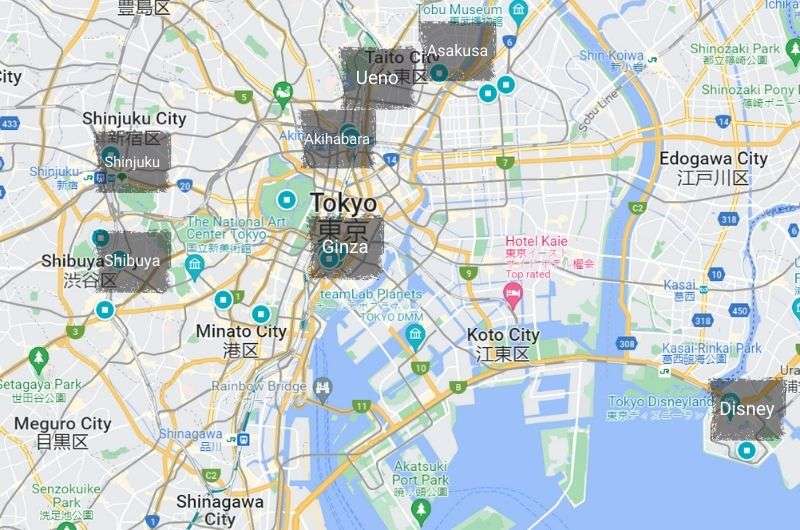
Here’s a map of the best neighborhoods to stay in if you’re visiting Tokyo for the first time (or any time). I recommend some much more than others! (The large central green area is the Imperial Palace.)
Introduction to Tokyo
Tokyo is a city that defies easy description—a massive, sprawling metropolis where ancient shrines and futuristic skyscrapers somehow coexist in a kind of organized chaos. With over 38 million people calling it home, Tokyo is a huge city in every sense of the word.
It’s a place where you can slurp ramen in a tiny alleyway, then turn the corner and find yourself in a neon-lit shopping district that looks straight out of a sci-fi movie.
But here’s the thing: when you’re planning to stay in Tokyo, the sheer size and variety of neighborhoods can make your head spin. Each area has its own vibe, from the buzzing energy of Shibuya to the old-school charm of Asakusa, and picking the right spot can make or break your trip.
The hotel's location is a key factor in choosing where to stay, as it directly impacts your convenience, access to popular attractions, transportation hubs, and the overall experience of your visit. That’s why this guide exists—to help you cut through the noise and figure out where to stay in Tokyo, whether you’re a first-timer, a foodie, a family, or just someone who wants to see what all the fuss is about in this huge city. Let’s dive in and find your perfect Tokyo base.
1. The best neighborhood to stay in Tokyo overall: Akihabara
This is where we stayed on my first Tokyo visit, and I’d stay there again if I re-visited (not gonna happen).
- Pros: Central location, great transport connections, rich in pop culture, loved our hotel
- Cons: Can be crowded, somewhat commercialized, full of epically weird and very Japanese “entertainment”
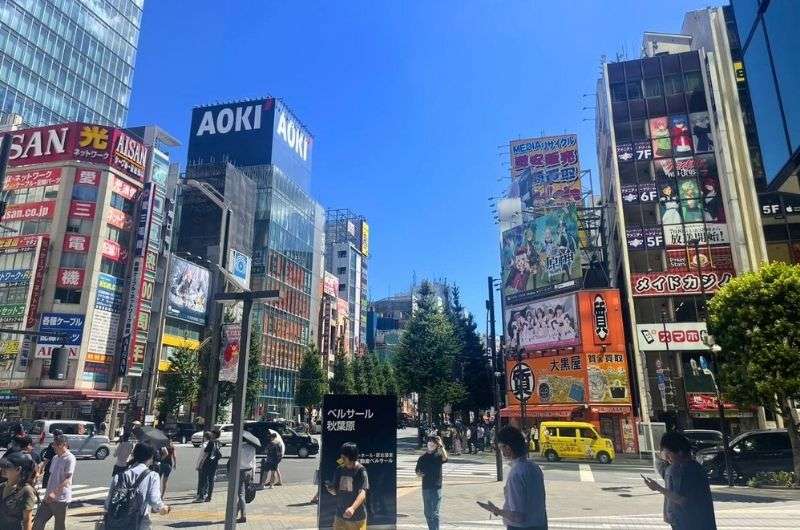
A typical street in the Akihabara neighborhood
Akihabara's location just outside central Tokyo puts you within easy reach of Senso-ji and Tokyo Skytree to one side, and the Imperial Palace and Ginza to the other. The Pokémon Center, a must-visit for Pokémon fans, is also nearby and makes for a fun stop while exploring the area.
Shibuya is a bit further away, but that's alright—I wasn’t blown away by the iconic crosswalk or the crowded streets anyway.
Akihabara on the Yamanote Line, Tokyo's most crucial transit route, means you're well connected to the rest of the city, making it a fantastic base for exploring Tokyo and its diverse neighborhoods.
When it comes to accommodation, the Akihabara and Tokyo Station area offers a range of options, including business hotels. Business hotels are a practical and popular choice here, providing convenience, comfort, and good amenities for travelers who value efficiency and location.
In Tokyo, a city with so many people that every peculiar niche finds an audience, you might as well stay in the epicenter of strange, right? Staying in the Akihabara neighborhood means you get a crash course in modern Japanese culture in the weirdest ways possible—maid cafes, gadgets upon gadgets, anime stores, pachinko machine “casinos”, people wearing costumes in broad daylight, etc. Oh, and karaoke! Loved me some karaoke (who would've thought?).
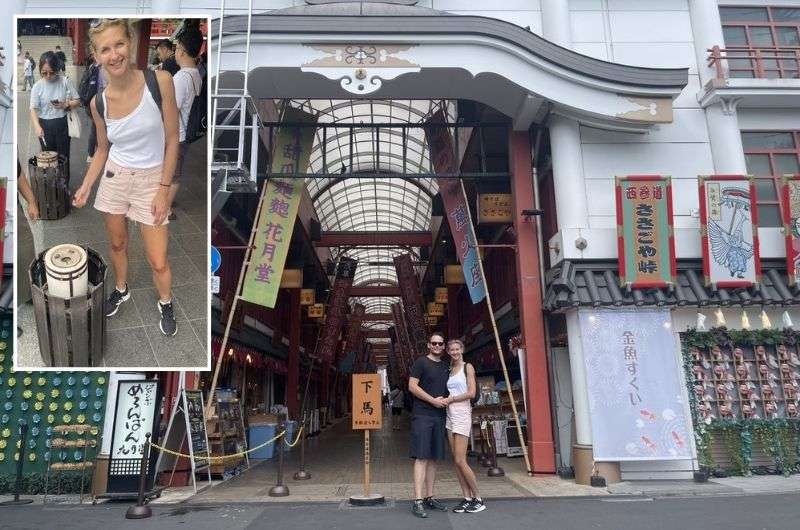
It’s easy to reach Senso-ji from Akihabara
Hotel recommendation in Akihabara
During my stay at Nohga Hotel Akihabara, I found it to be a bit on the pricey side for what you get, but that seemed to be the norm for a hotel room in Japan in general. The hotel offers double rooms that are small by international standards but well-equipped and modern, matching typical Tokyo standards for size and amenities.
However, it does have a standout feature—a very good restaurant right on site, which isn't always a given in Japanese hotels. The rooms themselves are comfy, with comfortable beds that provide a good sleep experience, and come with great black-out curtains, yet surprisingly for Japan, a chilly toilet seat that wasn’t heated - how annoying after your butt gets used to being pampered with heated toilet seats all over the country!
If you're curious about my full Tokyo experience, see my article about the best and worst things to see in Tokyo. It’ll help you decide which neighborhoods you should try to be close to on your own trip to Tokyo.
2. Where to stay in Tokyo for foodies: Anywhere, really
Tokyo is a food lover’s playground, and honestly, you can’t go wrong no matter where you stay in Tokyo, provided you’re within easy reach of a train station. The city’s culinary scene is legendary, with everything from Michelin-starred sushi counters to hole-in-the-wall ramen joints and yakitori bars tucked under the train tracks.
Whether you’re craving tempura, wagyu, or the latest Instagrammable dessert, you’ll find it all within easy access of Tokyo’s vast network of train stations. Neighborhoods like Shinjuku, Shibuya, and Asakusa are packed with restaurants, izakayas, and quirky cafes, so you’ll never be far from your next great meal.
The real secret? Don’t stress too much about picking the “ultimate foodie district” - Tokyo’s public transport makes it a breeze to hop between neighborhoods for dinner, late-night snacks, or a spontaneous sushi breakfast. As long as you’re near a train station, you’ll have the city’s best bites at your fingertips. So, stay in Tokyo wherever suits your style, and let your taste buds do the exploring.
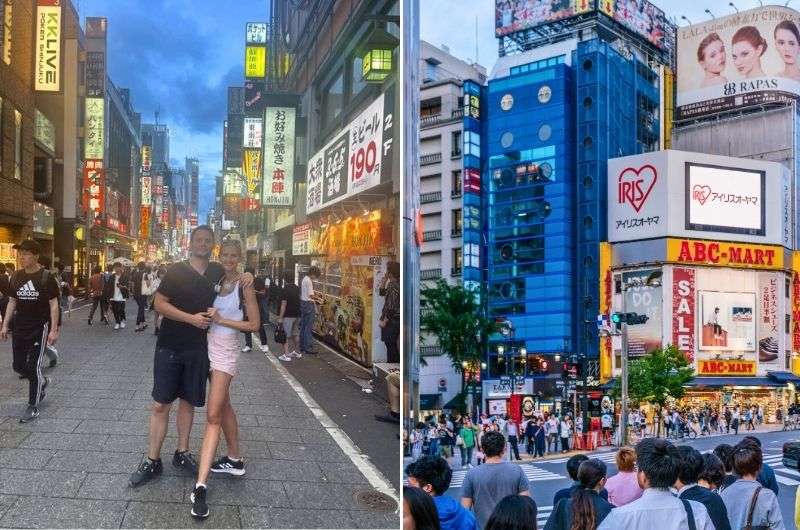
Some people swear Shinjuku is the best place in Tokyo for foodies
Then again, there are good restaurants in any of the centrally located neighborhoods in Tokyo, so it’s not like you won’t be able to eat unless you’re in “the place to stay for foodies”. Also, your idea of foodie heaven might not be the same as mine. Are you a fine-dining foodie? Or more of a street food foodie? Because I’m not really a market-type foodie.
I’ve always said there’s not much to do in Tokyo, so why not just treat the dining as one of the stops on your Tokyo itinerary, but not as the focal point of your hotel choice? And just so you know, the best restaurants in Japan aren't even in Tokyo! I found some incredible eats in Nagano and Hakone that outshine Tokyo's offerings by miles.
When I stayed in Tokyo, I chose the neighborhood called Akihabara because it is centrally located and very Japanese, and stayed at Nohga Hotel Akihabara precisely because it had a solid restaurant—problem solved. I wouldn’t, for example, stay at
Like I said, all of the central neighborhoods in Tokyo will satisfy your foodie cravings. These areas also offer a range of accommodation options, including budget hotels and mid-range choices, so travelers with different budgets can find a place to stay near great food.
Here’s a little breakdown of top foodie neighborhoods if you can’t help yourself and let your stomach do the hotel bookings:
- Ginza: Known for its upscale dining and luxury, Ginza is home to numerous high-end sushi restaurants and exclusive Japanese cuisine spots. Very central.
- Shibuya: Offers a mix of affordable eats and trendy dining options, perfect for foodies looking for variety, innovation, and crowds. Not my favorite tbh.
- Shinjuku: Let’s call it a diverse culinary landscape where you’ll find everything from tiny izakayas serving authentic Japanese fare to top-tier restaurants. A place that also has lots of shopping… Remind me again why you traveled here across the world?!
- Asakusa: Great for traditional Japanese food and street eats. This is where Senso-ji shrine is, and it’s close to SkyTree, but pretty far from everything else.
Oh, and if you’re a weird type of foodie, then you’re making a great choice by visiting Tokyo, because they cater to all kinds of fetishes! If you melt at the thought of getting waited on by a maid who’ll talk to you in an annoying and overly complacent tone and draw pictures for you on your dessert, head to Akihabara’s maid cafes. I loathed every second of them, but I understand not everyone is as sane as me.
And as a foodie, you need to read my Big Japanese Food Guide to get the lowdown on the food culture, what is what in Japanese food, and tips on things like chopsticks and tipping (very important!).
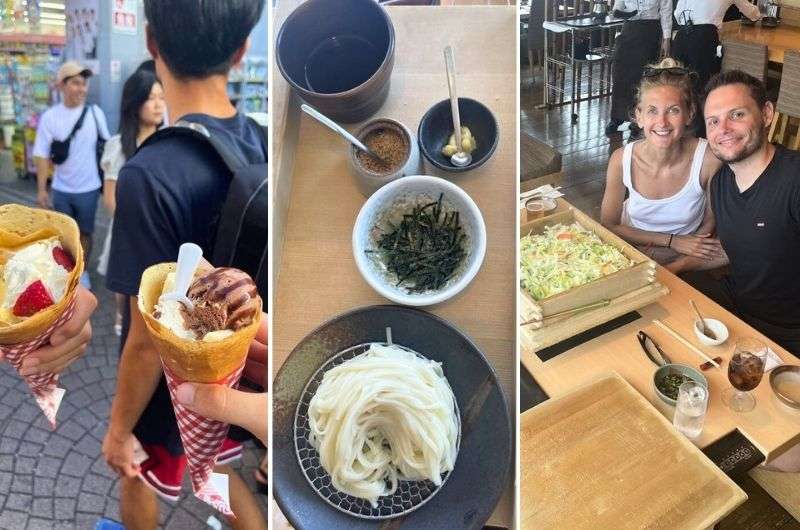
Eating our way through Tokyo. All parts of Tokyo…
Hotel recommendations for foodies in Tokyo
I’m not about to list 16 hotels for you to choose from. Since there are so many neighborhoods in Tokyo that can be thought of as “foodie-friendly”, you’ll need to do your own research based on the area you choose. Hotel prices in these foodie neighborhoods can vary widely depending on location, amenities, and the type of hotel, with some areas offering more budget-friendly options and others featuring higher-end stays.
To be honest, I don’t even really want to tell you where to stay if you want to eat well, because I know (from my experience with myself) how annoyingly unique and high-maintenance someone’s food obsession can be. I wouldn’t dare bring your disappointment onto myself and face the wrath of an angry foodie. I can see it now: “Jan said I’d eat well close to this hotel, but the [whichever food you were dissatisfied with] was too dry/small/chewy/bland and now I hate Jan forever and think he cannot be trusted!!”.
Like I said, I chose to stay in Nongha Hotel Akihabara, because it has a good onsite restaurant, which is key for me.
But if you want to take your food travel to the next level, I have to mention this hotel, more as a curiosity than a real recommendation (I haven’t stayed there): ANA InterContinental Tokyo. It has 12 restaurants and bars on site, including Michelin-starred Pierre Gagnaire Restaurant and an award-winning cocktail bar on the top floor. You know, in case you really just want to spend all your time in Tokyo eating and drinking.
3. Best area to stay in Tokyo for families: The one the parents will enjoy… or Ueno
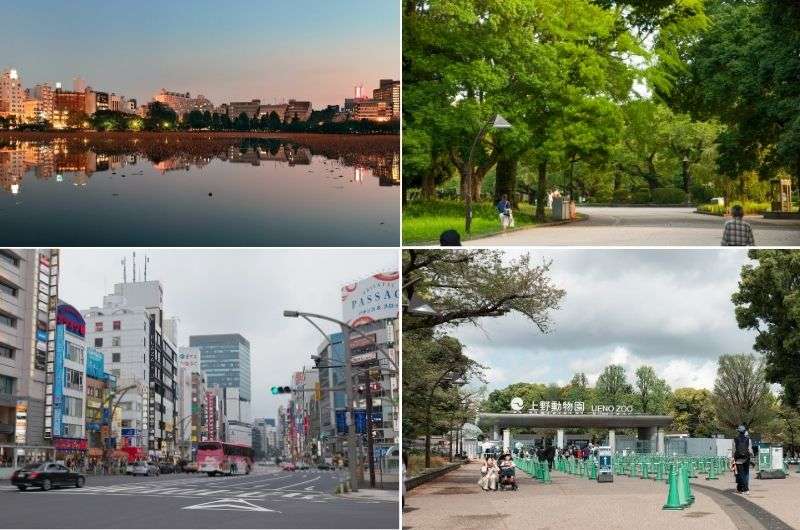
Ueno is popular with families because of the park and zoo
In this section, I’m assuming you mean you’re traveling with children, not your uncles and grandmothers. Because I think the grannies are ok staying anywhere where other people would, right? They are, in fact, people too, you know? Do you know who else qualifies as “people”? Kids!
So not to get all philosophical on you, but why do we even need a specific "family-friendly" tag for a neighborhood? Doesn't every tourist, old and young, need comfort, convenience, and a bit of culture? I mean if you’re looking to stay close to the zoo, just see where the Tokyo zoo is and stay there.
If I were to leave it at that, the best area to stay in Tokyo for families is the one that the parents would enjoy. Apart from maybe not staying in nightlife central—Roppongi and even Shibuya could be too over-the-top for some people—and trying to avoid the red light district—Kabukicho in Shinjuku—, any neighborhood you deem appropriate for your particular travel style and interests is perfect for families with kids, even in Tokyo. Though I can’t lie, I’m pretty sure your kids would appreciate Godzilla’s hand in the room @ Hotel Gracery Shinjuku!
That said, the aforementioned Tokyo zoo is in Ueno district, which actually happens to be adjacent to Akihabara, aka the best part of Tokyo to stay in for tourists (of all ages). The zoo is also right next to Ueno Park, and both are within easy walking distance of many hotels in the area, making it super convenient for families. I admit it could be useful to let your mini-me let out some steam in a place that doesn’t involve just concrete and traffic.
So that actually works out well, doesn’t it? One stop to the north of Akihabara Station, Okachimachi Station in Ueno is also on the main transportation loop line called the JR Yamanote Line.
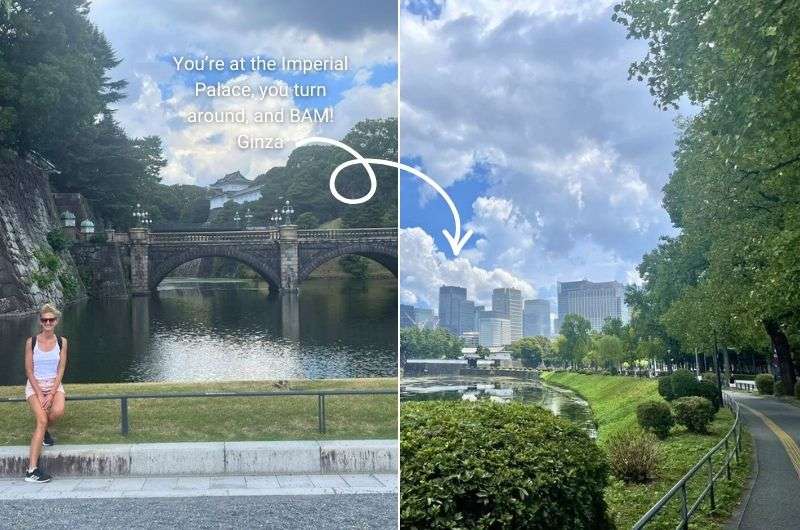
Ginza is centrally located and adjacent to the Imperial Palace
If you’re more of a fancy pants family or just like your surroundings to include fewer adult men dressed as Naruto and Pokémon, maybe look into Ginza. It’s not my cup of tea, but it’s a more refined, shopping-heavy neighborhood with more upscale establishments. Plus, it’s extremely centrally located and very close to the Imperial Palace. More on Ginza below.
And last but not least, if you’re in Tokyo with kids, you’re going to at least one of the Disney parks, right? We loved DisneySea and thought everyone, child or no child, should visit. It’s not one of the top Disney parks worldwide for nothing! Here’s more about my DisneySea experience. Obviously, staying in one of the hotels around Disneyland and DisneySea would be the absolute top place to stay in Tokyo with kids if the kids were the ones to choose. A warning for the parents: Expect lots of kids, haha. What? Don’t think I don’t know you hate other people’s kids!
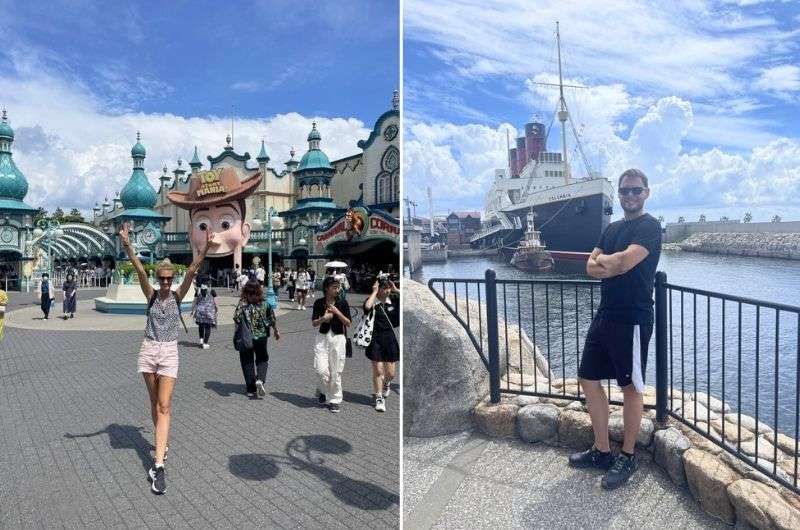
You don’t need kids to enjoy DisneySea! But if you do have some, staying close to the Disney Park could be a good idea
Here's a summary of the best areas to stay in with kids:
- Try these: Ueno (within walking distance to the park and zoo), Akihabara, Ginza, close to Tokyo Disneyland and DisneySea
- Maybe not these: Roppongi, Kabukicho in Shinjuku, anywhere close to Shibuya crossing, anywhere far from the main transportation loop line called JR Yamanote Line
Hotel recommendations in Tokyo for families
I don’t have kids, nor do I travel with my granny, but here are some hotels I think would be great for those traveling as a family.
Tip: One thing you do need to look out for if your kid is annoyingly large (I mean they need their own bed and won’t squeeze into a cot or your bed) is hotels with family rooms or at least rooms that’ll comfortably fit you all—Japan isn’t known for their spacious accommodation! Ueno does have a higher concentration of hotels with family rooms.
Many hotels also offer twin rooms, which are a convenient option for families traveling with children who need separate beds. Twin rooms are often larger than standard rooms and provide extra space and comfort for sharing.
- MIMARU TOKYO UENO EAST: Great, comfortable family rooms with bunk beds, kitchenettes, and a rooftop terrace area where you can get some fresh air. Right next to Ueno Station. Mimaru has more hotels around the city if you want a different location.
- Section L Ueno-Hirokoji: Smack in the middle between Ueno and Akihabara, I’d love this place if I were a kid. The rooms come with a sort of bunk bed that converts from a small couch and a top fold-down bed like it would on a train. Need I say more?
- Hotel GrandBach Tokyo Ginza, MUJI HOTEL GINZA, and Dai-ichi Hotel Tokyo are all in Ginza and have rooms that’ll fit families. That alone is more what most of the hotels in Ginza can offer—many just won’t be able to get another bed into the room, and you’d need 2 rooms to fit the whole family.
- Urayasu Brighton Hotel Tokyo Bay. All rooms have a Disney view, and it doesn’t look like Cinderella threw up all over it. You’re welcome.
- Grand Nikko Tokyo Bay Maihama. Colorful but still tastefully done, cool pool area that is straight out of a fairytale.
4. The best places to stay in Tokyo for upscale shopping: Shibuya and Ginza
Picking a place to stay based on shopping? Now that's something that really puzzles me. Even more than choosing based on restaurants. I don't see anyone choosing the best neighborhood for temple and shrine enthusiasts, which would make a lot more sense, right?!
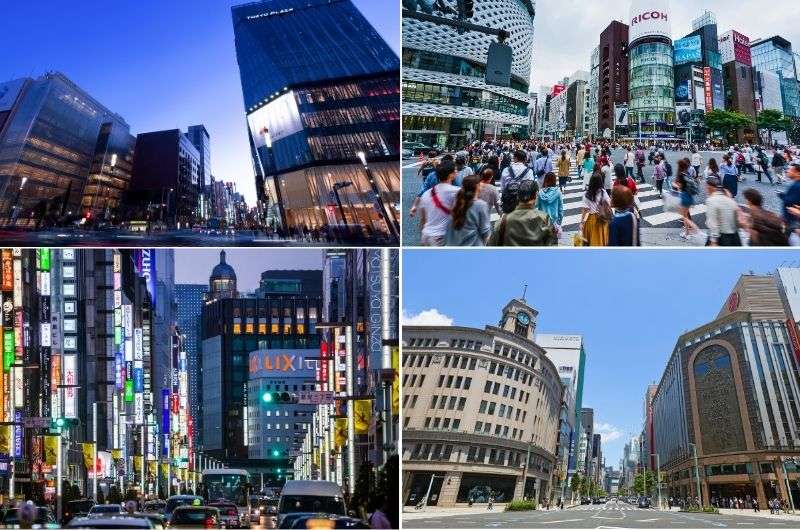
Ginza’s the place to shop if you like that kind of thing
Ginza is not only known for its luxury shopping but also for its fantastic location, making it easy to access top attractions and cultural sites. The hotel’s location in Ginza puts you close to high-end stores, fine dining, and even some impressive art galleries that add to the neighborhood’s sophisticated vibe.
But maybe I just don’t get shopping therapy. Maybe because I’m a dude, maybe because I think clothes are just a great way to not walk around naked, but not much else. But hey, if shopping’s your game, here’s my two cents on where you might want to stay in Tokyo:
- Ginza: Think of it as Tokyo’s upscale shopping boulevard—luxury and elegance at every corner. If you're looking to splurge, this is your spot. On weekends, cars are banned from the main street, and Ginza becomes a little more tolerable. Gate hotels in Ginza offer strategic locations near famous landmarks and shopping destinations, making them an excellent choice for visitors who want both convenience and style.
- Shibuya: It's the heart of youthful exuberance with trendy boutiques and some seriously eclectic street fashion. Always buzzing, always something happening, always makes me want to run away. The fantastic location of a Shibuya hotel means you’re steps from shopping, nightlife, and the famous crossing, with the nearest metro station making it easy to get around. Popular options like the Lyf Shibuya Tokyo Hotel are especially appealing for first-time visitors and solo travelers.
- Shinjuku: Imagine a forest of skyscrapers with more stores than trees. It’s a shopping jungle where you can easily get lost among retail giants. That’s a no for me, but maybe a yes for shoppers. And for those that love Godzilla (stay at Gracery Hotel Shinjuku if you want to be roomies with the big guy).
- Extra tip for the quirky shoppers: The Akihabara neighborhood offers a variety of shopping experiences that can really be experiences, from electronics to pop culture merchandise. It's vibrant, it’s busy, it’s where I stayed (but I’m not a shopper). You’ll have no doubt you’re in Japan if you stay in Akihabara!
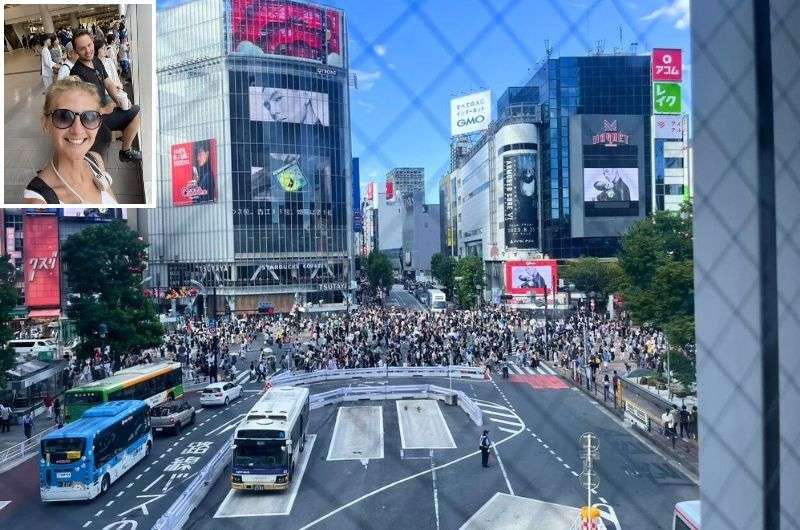
We went to Shibuya, we saw the crossing, we weren’t especially impressed with it, and we wouldn’t stay in the area because it’s not our style
Hotel recommendations in Tokyo for shoppers
If you choose to stay in Ginza, I’m assuming you want something a little nicer and with enough room for all those shopping bags. Try these hotels:
- THE BLOSSOM HIBIYA: Big rooms with big windows so you can peek at those skyscrapers, whether you’re in your room resting after you shopped and dropped, or from the restaurant when you’re still getting ready to drop some serious cash in the stores in the morning, at breakfast with rave reviews.
- The Tokyo EDITION, Ginza. If you need A LOT of room for your bags, appreciate minimalist design, and you don’t mind that a night there costs as much as a month’s rent for a small apartment in Prague.
If you’d rather hit the second-hand shops and trendy boutiques in Shibuya, here’s where I think you’d have a good night’s sleep:
- SHIBUYA STREAM HOTEL: Directly connected by a walkway to Shibuya Station. Cool design. Rooms aren’t huge, but even the smallest ones have a couch.
- Shibuya Excel Hotel Tokyu: Another hotel directly connected to Shibuya Station, so you can get direct views of the Shibuya Crossing if you feel like trying to figure out what the hype is all about. Not as nice as Shibuya Stream Hotel.
Honestly, the idea of choosing a place to stay just for the shopping opportunities is beyond me. But if that's what tickles your fancy, Ginza and Shibuya should cover all your bases and are well located for sightseeing too. I know a lot of people are torn between the two neighborhoods, so I’ll be comparing them in more detail in 3, 2, …
5. Ginza vs Shibuya: A shopper's dilemma or just a tourist trap?
So, you're tossing up between Ginza and Shibuya, eh? Well, buckle up, because here's my two cents on these two frenetic shopping hubs.
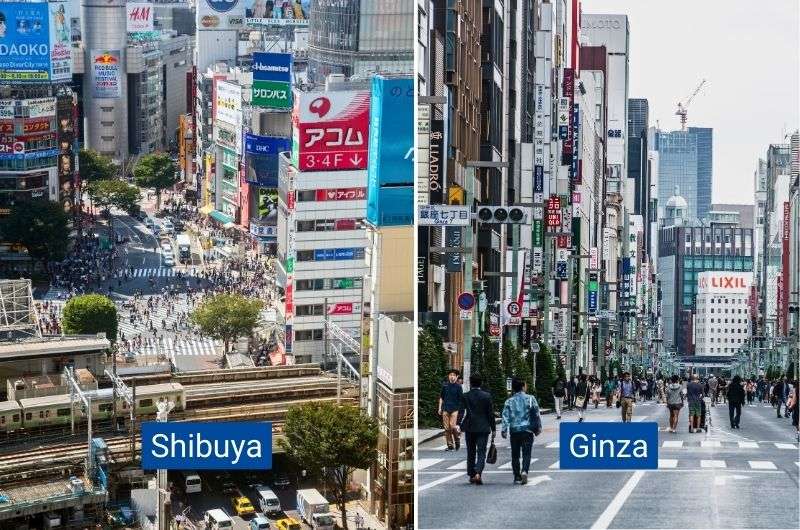
At first glance, there’s not a huge difference between Shibuya and Ginza
Ginza: Upscale
- Pros: It’s upscale and refined—think the Beverly Hills of Tokyo. The main drag becomes pedestrian-only on weekends, making it less of a bumper car experience. It’s the kind of place where you can pretend to be a high roller, even if you're just window shopping. It’s centrally located, close to the Imperial Palace, and hey, if you're into watches, Mickey Mouse, or need a new pen (or a thousand), you’ll be in paradise. Ginza is also known as a major business center, with easy access to JR Tokyo Station, making it convenient for business travelers and those wanting to explore the commercial heart of the city.
- Cons: However, the high-end vibe feels a tad pretentious to me. It's like every other swanky neighborhood in any major city. A bit too polished and boring for my taste.
Shibuya: Youthful
- Pros: Shibuya is the pulsing heart of Tokyo's youth culture, a chaotic blend of the latest fashions and retro finds that could energize even the most jaded traveler. Unless you’re me. Now, I’m not old, but wandering through the throngs of trendy youth mixed with bewildered tourists can feel like an anthropological study on the exuberance of age. It's here you also stumble into Harajuku, the mecca of all things kitsch and quirky. For someone who recoils at the sight of hipsters, it’s a love-hate relationship. While the vibrancy is magnetic, the crowds can test your patience faster than you can say "avocado toast." Shibuya train station is a major transportation hub, making it easy to get around Tokyo and access nearby attractions. Don’t miss Shibuya Sky, the open-air observation deck offering breathtaking views of the city, or the nearby Meiji Jingu Shrine, a must-visit cultural landmark just a short walk from Shibuya and Harajuku.
- Cons: The place is consistently packed with locals and tourists alike. The famous Shibuya Crossing gives you a taste of what to expect—I went, I saw, I never need to see again. A busy crosswalk, WOW! Honestly, it feels overrated. Once the novelty wears off (in about 5 minutes), Shibuya’s just another crowded shopping area—just with a lot more neon.
Ginza and Shibuya each have their perks and quirks, and choosing between them really boils down to what kind of crowd you can jive with—or how thick your wallet is. For me, both places capture the frenetic energy of Tokyo, though they aren’t anywhere near the top of my list of Tokyo must-visit.
6. Neighborhoods to Consider: Asakusa
If you want to experience Tokyo’s more traditional side, Asakusa is the neighborhood to put on your radar. This is where the city’s old soul shines through, with the iconic Senso-ji Temple drawing both locals and tourists for centuries. The streets around the temple are lined with traditional tea houses, souvenir shops, and little stalls selling everything from sweet rice cakes to crispy tempura.
Staying in Asakusa means you can soak up the atmosphere of “old Tokyo” while still enjoying a convenient location. Asakusa is also known as a quiet neighborhood, providing a peaceful environment away from the city's hustle and bustle, making it ideal for visitors seeking tranquility.
The area is well-connected by metro and train lines, so you’ll have easy access to the rest of the city—no need to worry about being stranded in a tourist time warp. Plus, Asakusa is a haven for budget travelers, with plenty of affordable hotels, capsule hotels, and traditional Japanese inns (ryokans) that let you experience a bit of local hospitality without breaking the bank.
If you want a taste of history, culture, and a side of Tokyo that’s a little less neon and a little more nostalgic, Asakusa is a fantastic place to stay in Tokyo.
7. Roppongi: Nightlife, Art, and International Vibes
If your idea of a great trip involves late-night adventures, world-class art, and a cosmopolitan crowd, Roppongi is the Tokyo neighborhood for you. Known for its vibrant nightlife, Roppongi is where locals and expats alike come to let loose after dark. The area is packed with high-end bars, trendy clubs, and international restaurants, making it a favorite for night owls and party seekers.
But Roppongi isn’t just about the nightlife. By day, it transforms into one of Tokyo’s premier art and culture districts. The iconic Roppongi Hills complex is home to luxury shopping, fine dining, and the Mori Art Museum, which showcases cutting-edge contemporary art. Nearby, you’ll find the National Art Center and Suntory Museum of Art, making this area a must-visit for culture vultures.
And let’s not forget Tokyo Tower - one of the city’s most recognizable landmarks. Just a short walk from Roppongi, the tower’s observation decks offer sweeping views of the Tokyo skyline, especially magical at night when the city lights up.
Roppongi’s international vibe means you’ll find English menus, a diverse crowd, and a welcoming atmosphere for travelers from all over the world. Whether you’re here for the art, the parties, or just want to see Tokyo from a different angle, Roppongi is a fantastic place to stay in Tokyo.
8. Useful Tips for Visiting Tokyo
Visiting Tokyo for the first time? Welcome to the land of endless options and sensory overload! This massive city can be a bit much, but a little preparation goes a long way. First, always have a map or Google Maps handy - Tokyo’s streets can be a maze, and even locals get lost sometimes. Brush up on a few basic Japanese phrases (a simple “sumimasen” or “arigatou” will get you far), and don’t be shy about asking for help - Tokyoites are generally friendly and happy to point you in the right direction.
Grab a Suica or Pasmo card as soon as you arrive; these handy cards make riding the trains and subways a breeze, and you can even use them at convenience stores. And remember, Tokyo is a city that rewards curiosity—don’t be afraid to wander off the main drag, try something new, or duck into that tiny restaurant with no English menu. With a bit of planning and an open mind, visiting Tokyo will be an adventure you won’t forget.
Getting Around Tokyo
Tokyo’s public transportation system is a marvel—fast, clean, and (once you get the hang of it) surprisingly easy to use. The metro and train networks cover every corner of the city, so you’ll rarely be more than a short walk from a station.
For maximum convenience, consider staying near a major train station like Tokyo Station or Shinjuku Station; these hubs put you within easy access of the city’s top sights and make day trips a breeze.
JR Shinjuku Station is one of the busiest and most important transport hubs in Tokyo, offering direct connections to many parts of the city and beyond. Its central location makes it easy to reach popular destinations, and it serves as a gateway for travelers heading to other regions.
Shimbashi Station is also a convenient spot for accessing the Yamanote Line and connecting to major areas like Tokyo Station. Travelers arriving at Haneda Airport or Narita Airport can quickly reach central Tokyo using efficient train services such as the Narita Express or the Tokyo Monorail, making airport transfers smooth and hassle-free. From major stations like Shinjuku and Shibuya, attractions such as Shinjuku Gyoen Park and Meiji Shrine are easily accessible for sightseeing and relaxation.
These transport hubs also provide easy connections for travelers visiting Osaka, making itinerary planning simple and flexible.
The Yamanote Line is your best friend—it’s a loop line that connects most of Tokyo’s major neighborhoods, including Shibuya, Shinjuku, Ueno, and the Tokyo Station area.
If you stick close to the Yamanote Line, you’ll find it easy to zip around the city without getting hopelessly lost. Taxis are available but can be pricey, and traffic can be a nightmare, so stick to trains and subways whenever possible. With a little practice, you’ll be navigating Tokyo like a pro—and you’ll wonder how you ever survived in cities with less efficient public transport!
So, where to stay in Tokyo?
Okie dokie. We've traversed Tokyo's varied neighborhoods, from Akihabara's quirky streets to the upscale allure of Ginza and the youthful energy of Shibuya (and even more “youthful” in Ueno!). Each area caters to different interests and travel styles, whether you're in for the culture, shopping, or a bit of everything.
And the winner for me is Akihabara, mainly because of its superb location. I mean, the metro in Tokyo is a pain in terms of "how long does it take to get somewhere". I am really happy to be centrally located, mainly because of the time. In the end, there are very few major differences in Tokyo neighborhoods - they all have great hotels, they all have great attractions, they all have very good restaurants, but conveniently located is but one.
But remember, Tokyo is much more than its tourist hotspots. Like karaoke—it was my favorite thing we did in Tokyo (here’s my Tokyo itinerary if you want to be sure to sightsee, eat well, AND sing your heart out!)! Seriously, while the food and shops are great, do try to see more than just that. Heck, you’d probably get a more Japanese experience if you really did hit up the zoo.
This post contains affiliate links. I earn a small commission if you make bookings through my links, at no additional cost to you. Thank you for your support!
1. The best neighborhood to stay in Tokyo overall: Akihabara
2. Where to stay in Tokyo for foodies: Anywhere, really
3. Best area to stay in Tokyo for families: The one the parents will enjoy… or Ueno
4. The best places to stay in Tokyo for upscale shopping: Shibuya and Ginza
5. Ginza vs Shibuya: A shopper's dilemma or just a tourist trap?
6. Neighborhoods to Consider: Asakusa
7. Roppongi: Nightlife, Art, and International Vibes



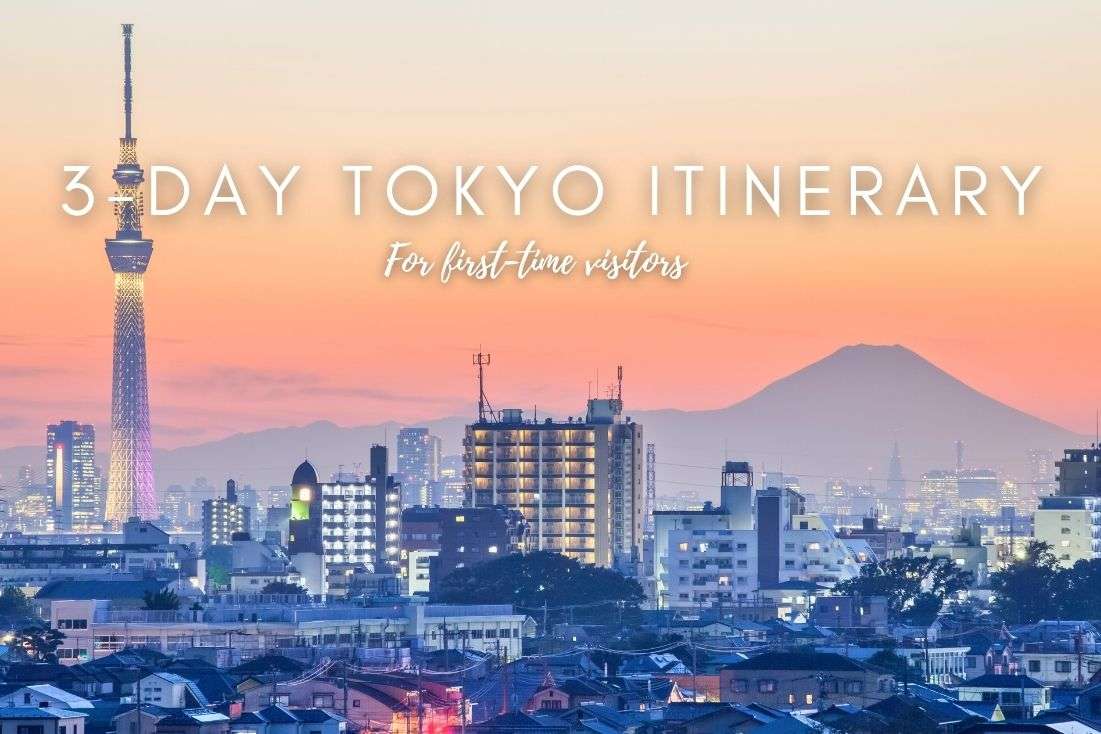
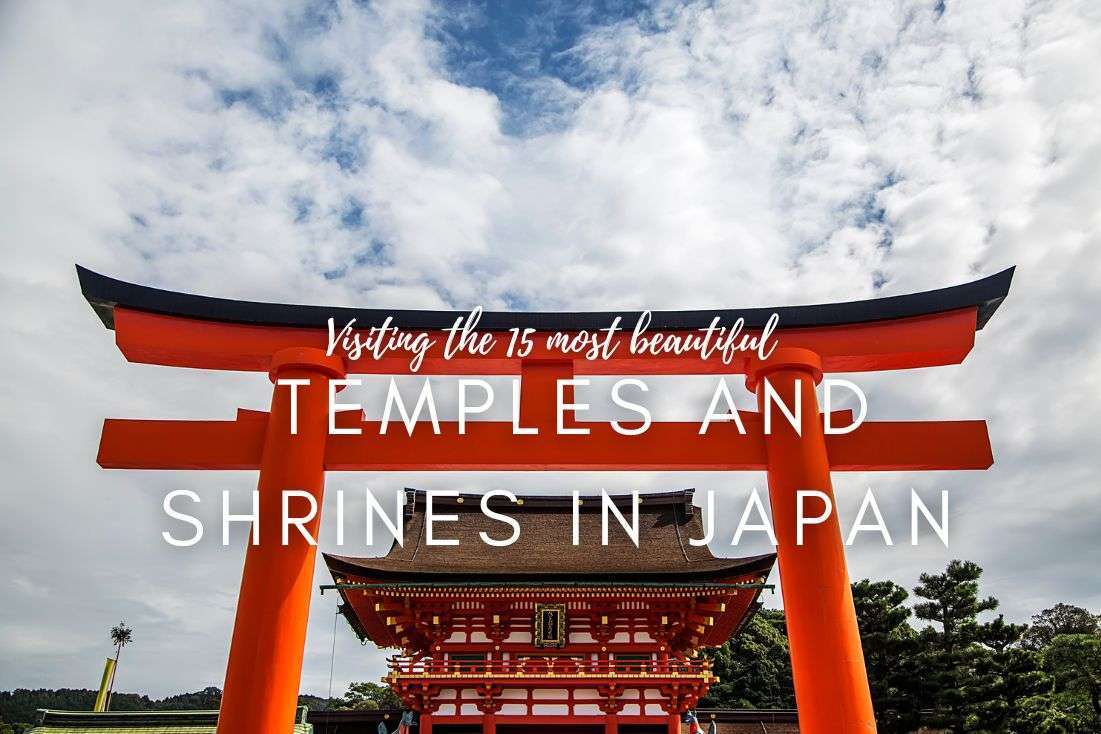





Comments | Thoughts? Give us a shout!